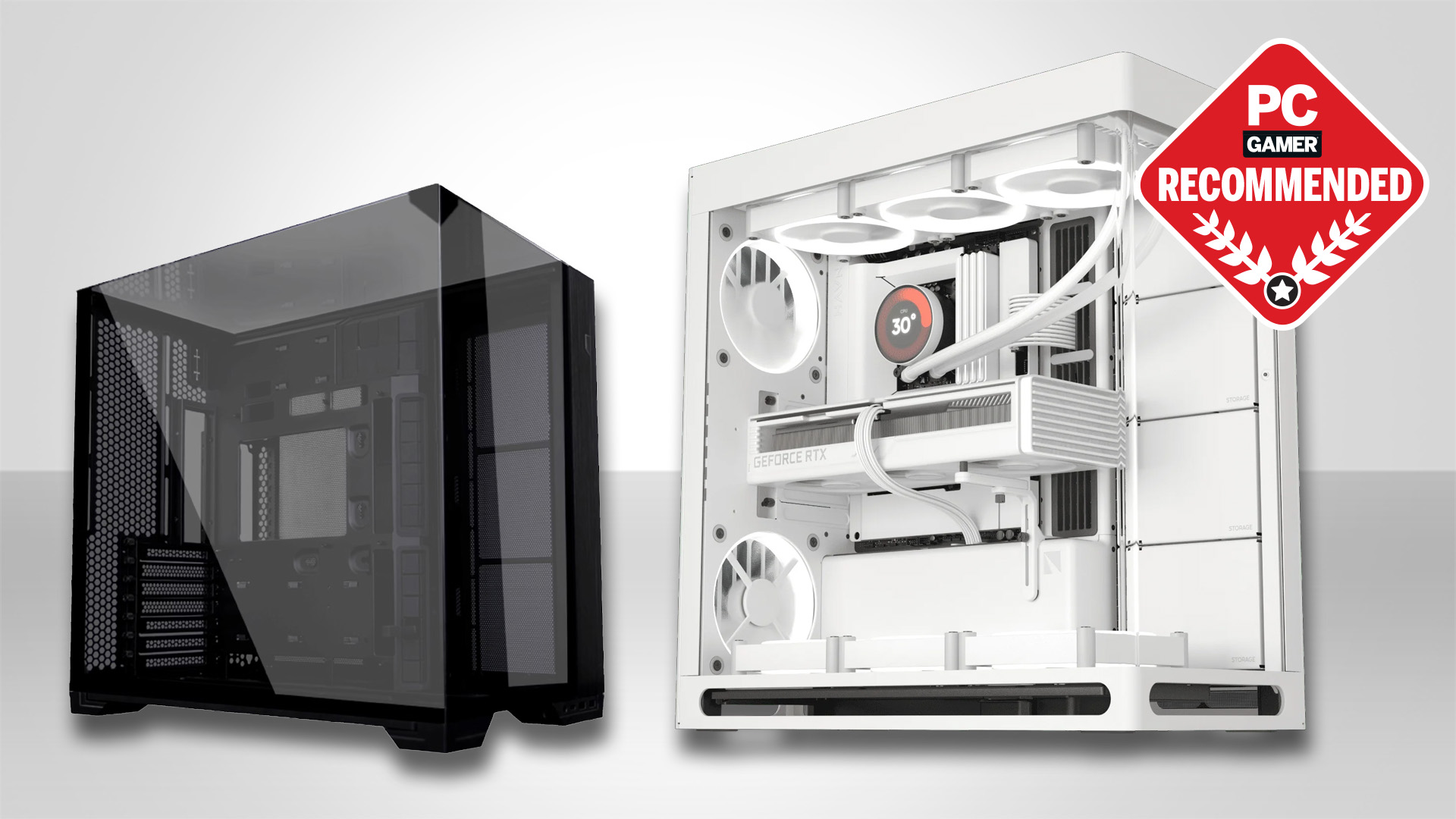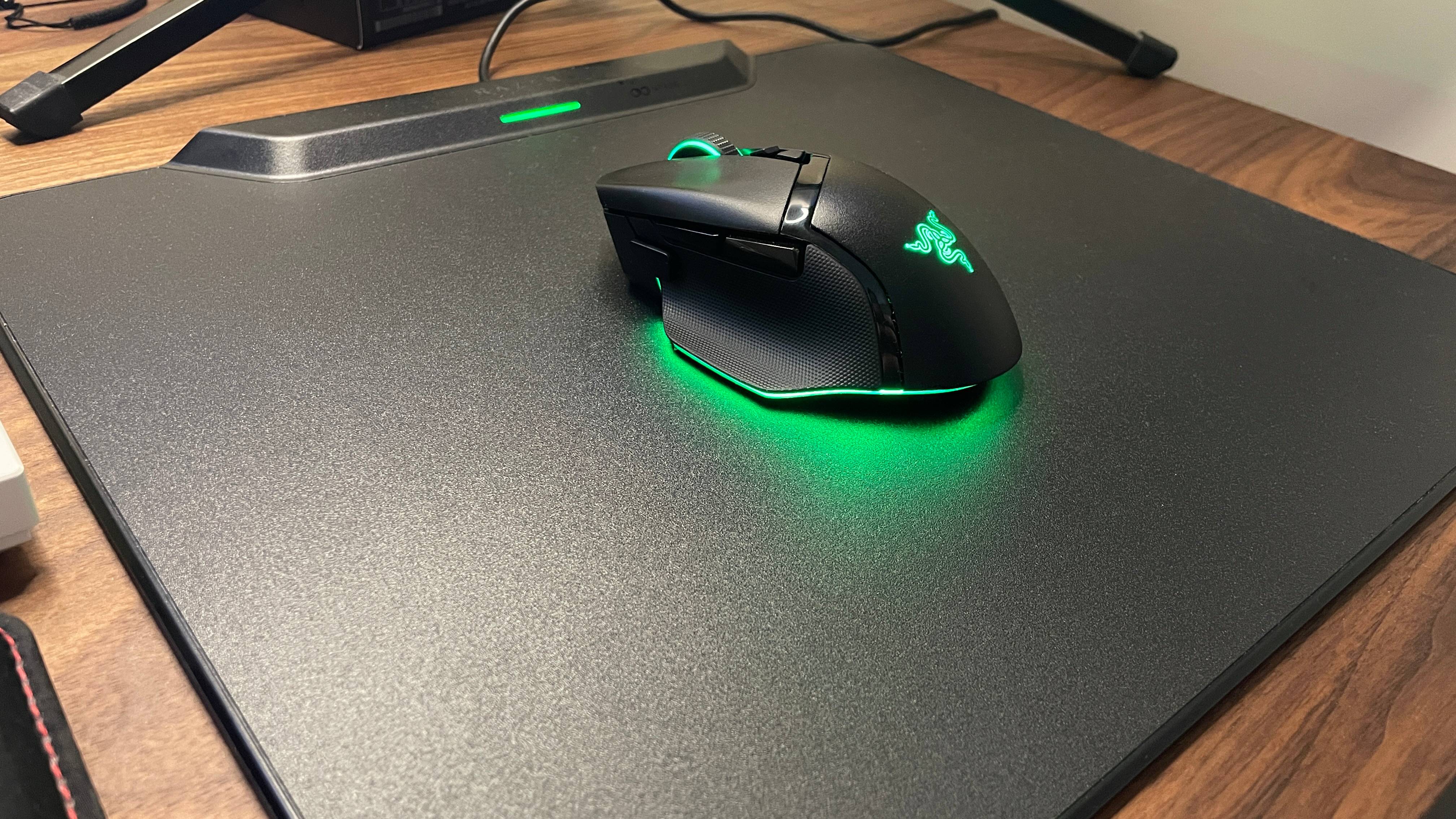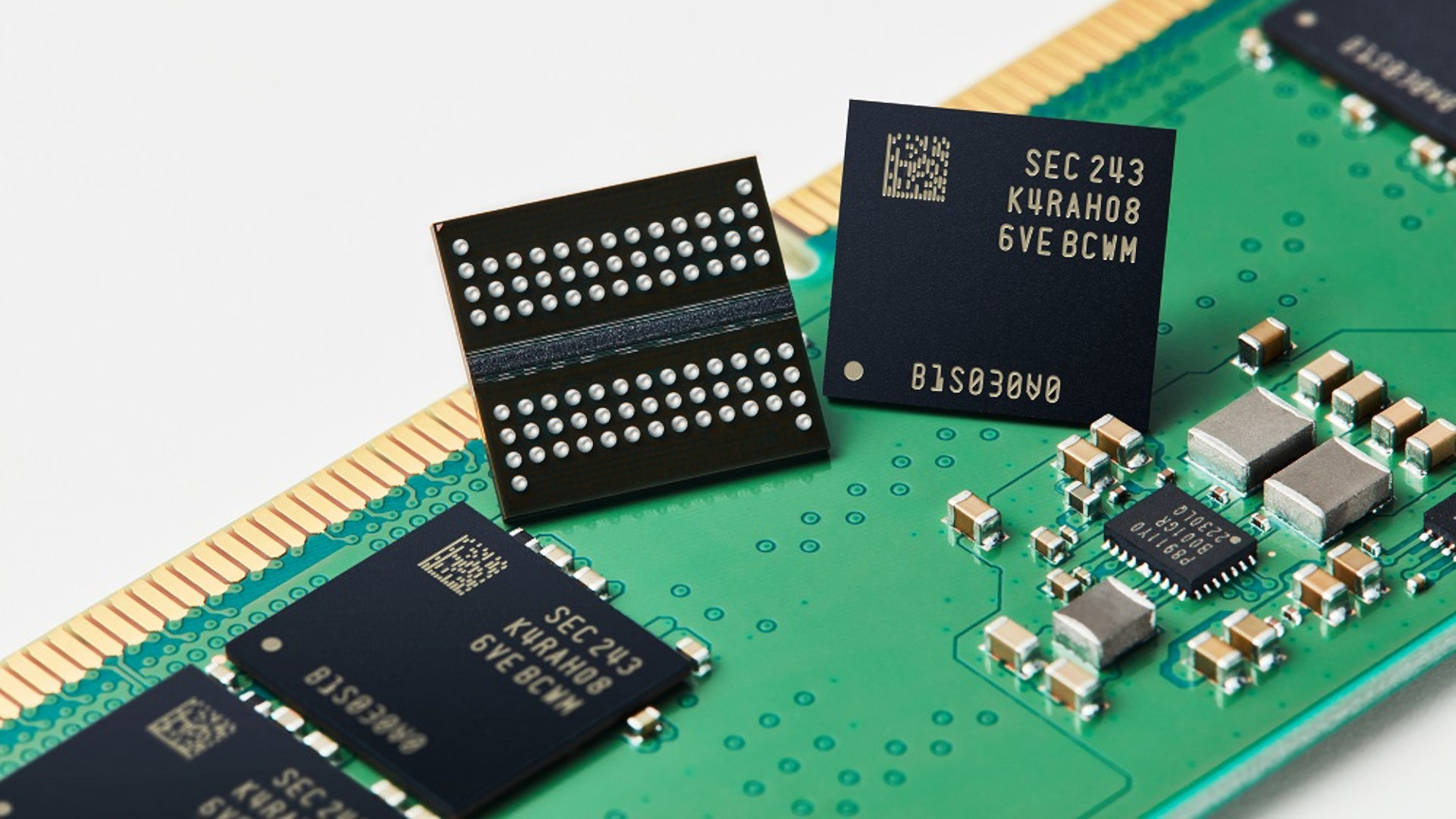
We can't seem to get a moment's respite in the PC gaming industry, can we? We spent the better part of this year lamenting ridiculously high GPU prices, and as soon as said prices finally start dropping, memory and storage prices start climbing.
You might have noticed this worrying trend if you've been looking for a RAM upgrade lately. Charts on pcpartpicker.com are telling: since mid-2025, DDR4 and DDR5 consumer memory kit prices have been climbing, with particularly notable spikes since September. That's true all the way from DDR4-3200 kits up to DDR5-6000 ones.
To take one concrete example, this 32 GB Corsair Vengeance DDR5-6000 kit on Amazon, which was stable at $95 or less throughout most of the year, but from mid-August onward started climbing. Now, it's up to $184, which makes for a 94% increase. This, after a good few months of sustained DDR5 price drops through the tail end of 2024 and first half of 2025.
DDR4 isn't safe, either, as this 32 GB Corsair Vengeance DDR4-3600 kit on Amazon shows. It was stable at about $70 through most of the year, but excluding a brief drop back to down to this original price, from mid-August it shot up to a new price of $161. That's a 115% increase: over twice its previous cost.
This trend fits all the market analysis we're seeing lately, which by now seems little more than pointing out the obvious: memory is becoming incredibly expensive. The "premium" you have traditionally had to pay for DDR5 compared to DDR4, according to a recent chart spotlighted by a Futurum analyst, no longer exists. In fact, in just the space of one week, spot prices for DDR4 memory recently doubled.
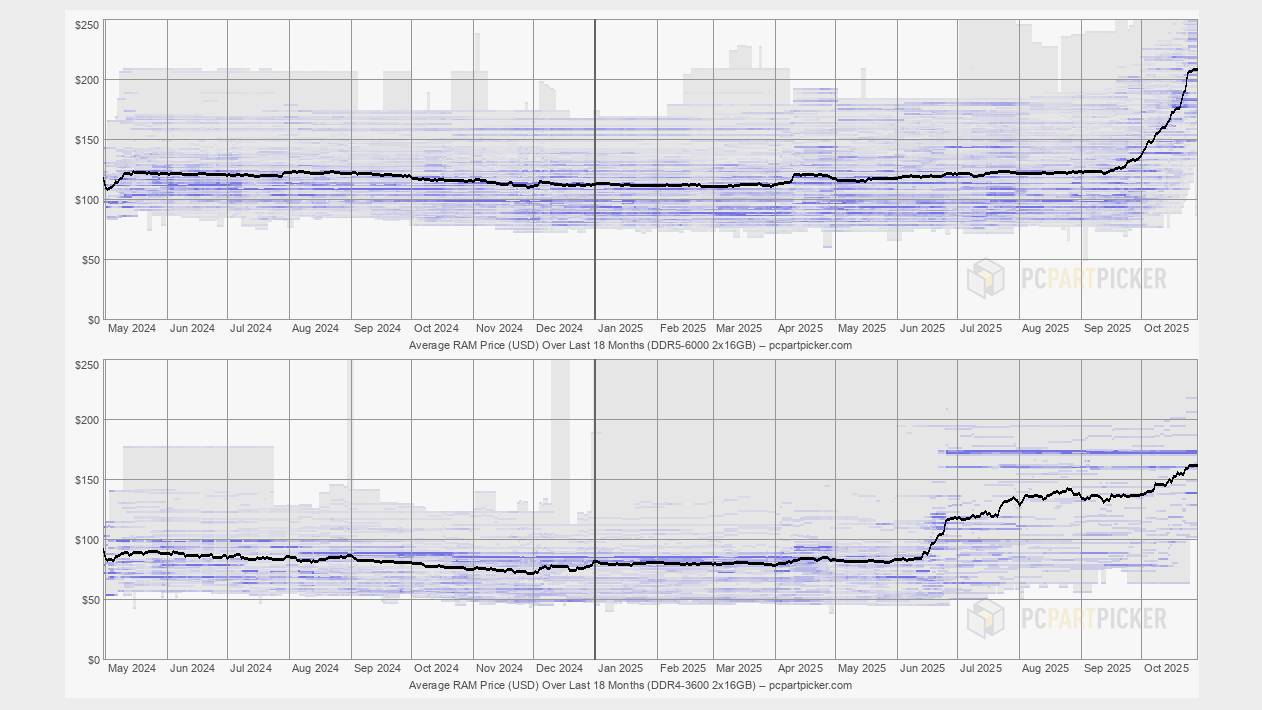
DDR4 memory is winding down production, which means less supply on the market. But we wouldn't necessarily expect this factor to cause such dramatically rising prices on its own. The fact that DDR4 prices are rising by such an extreme amount indicates that there simply isn't enough supply compared to demand across the memory industry in general, and that companies are looking for whatever memory they can get their hands on.
This tracks with what's been going on in the DRAM and memory industry. Samsung and SK Hynix, for instance, are reportedly charging customers up to 30% more for DRAM and NAND in the fourth quarter of 2025.
Keep up to date with the most important stories and the best deals, as picked by the PC Gamer team.
Note that that particular price hike includes NAND flash memory, too, which is what goes into non-volatile SSD storage. We've not seen as much of a reflection of rising flash storage prices at the consumer level as we have with RAM just yet, but it could be coming. Adata has said that supplies of DRAM, NAND, and even HDD storage are now in shortage, for the first time in 30 years.
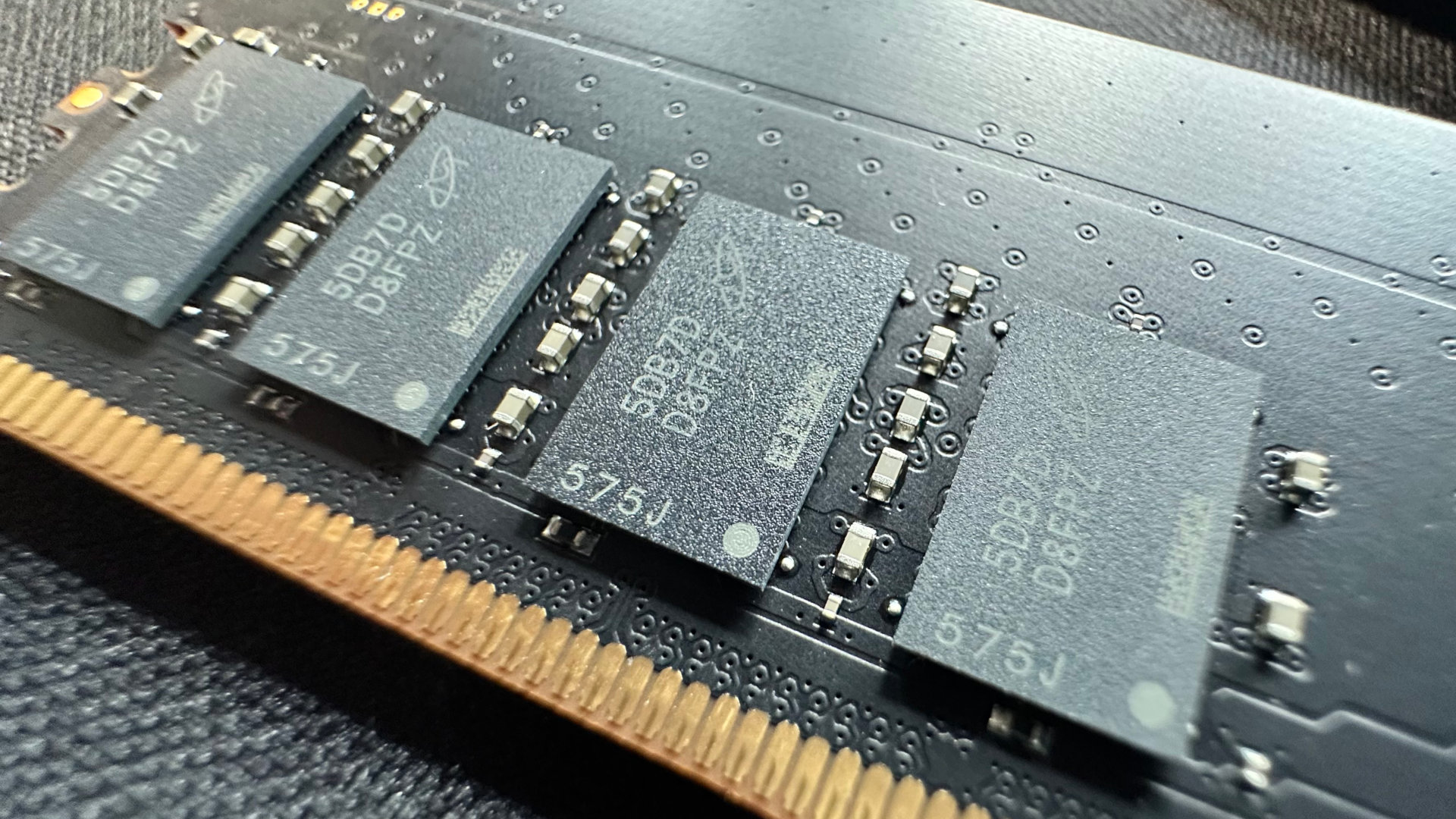
Many of the best SSDs for gaming are still pretty cheap, but I'd bet it won't be long before these shortages start showing effects in the consumer market, just like has started to happen with memory. It might not be long before both RAM and SSDs are prohibitively expensive.
The main cause of these rising memory and storage prices is of course the tech industry's summer sweetheart, artificial intelligence. In addition to giving us plenty of slop content to whine about, AI is also making our PC gaming hardware more expensive.
AI servers tend to require an astronomical amount of storage and memory, and the processors have to be able to access data in said storage and memory pretty quickly. Training AI requires great volumes of data, as does running inference once the AI is trained—and often re-training is continually ongoing. Usually this data is unstructured, as AI will pull from lots of different areas as it learns and forms its neural network or probabilistic models.
SSDs are ideal for this when it comes to storage, and for memory, high bandwidth memory (HBM) is what most AI server companies are looking for. This isn't the same as the DDR memory we get in our gaming PCs, but the memory chips are DRAM just like we use in our familiar DIMMs. AI servers buying up HBM means less DRAM in the market for our RAM kits, which causes prices to rise.
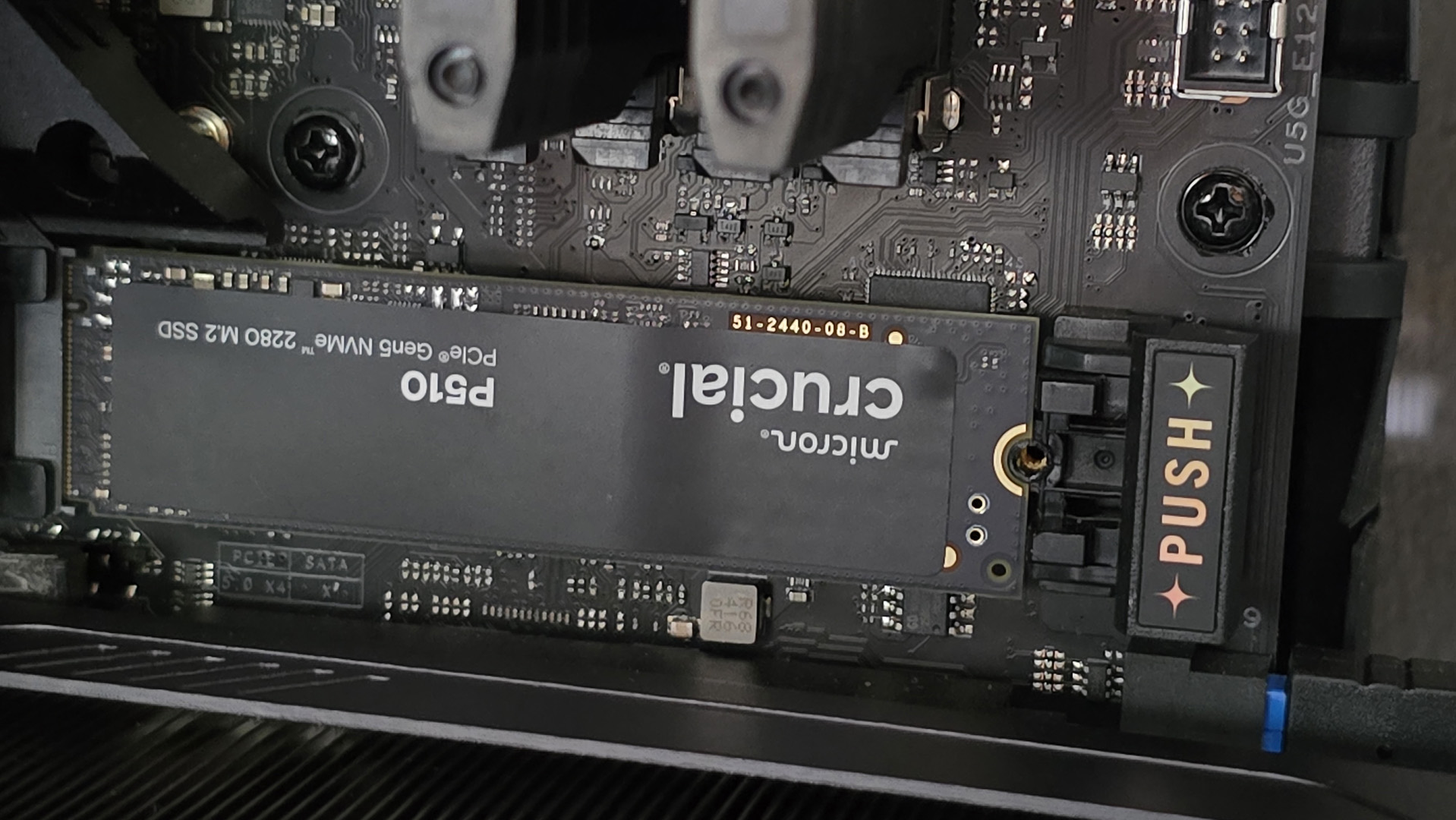
The same can be said for SSDs, if a little less directly. Even if the SSDs in AI servers aren't the same as the ones we put in our gaming PCs, NAND production for these AI server SSDs can detract from NAND production for consumer SSDs once supply is limited. Usually, AI servers use higher-quality SSDs than consumer ones, with different NAND, but when storage gets tight, AI server customers can start ordering more consumer-oriented NAND.
In fact, we've seen hints of this already, as Trendforce's investigations showed that cloud providers are increasingly being pushed towards QLC ('quad-level cell') SSDs like the ones found in many consumer desktops and laptops. This is driven in part because nearline HDDs (ones for infrequently accessed storage) are in short supply. Yep, that's right, even traditional hard drives are facing shortages and, surprise surprise, price hikes. Western Digital, for instance, recently raised prices for all its HDD products.
Memory shortages and rising prices have been predicted for a while now—over a year ago, for instance, Micron said that the AI would "impact the supply demand balance" as it's "made memory sexy again". Storage shortages, not so much. Last year, Trendforce analysis predicted that storage prices would decline by as much as 15% over the final quarter of 2024, and there was no prediction of the shortages we're seeing now. Peaks and troughs are normal in the memory industry, due to the ebbs and flows of supply and demand, but the recent shortages and price hikes don't fit that mould. They're simply too extreme.
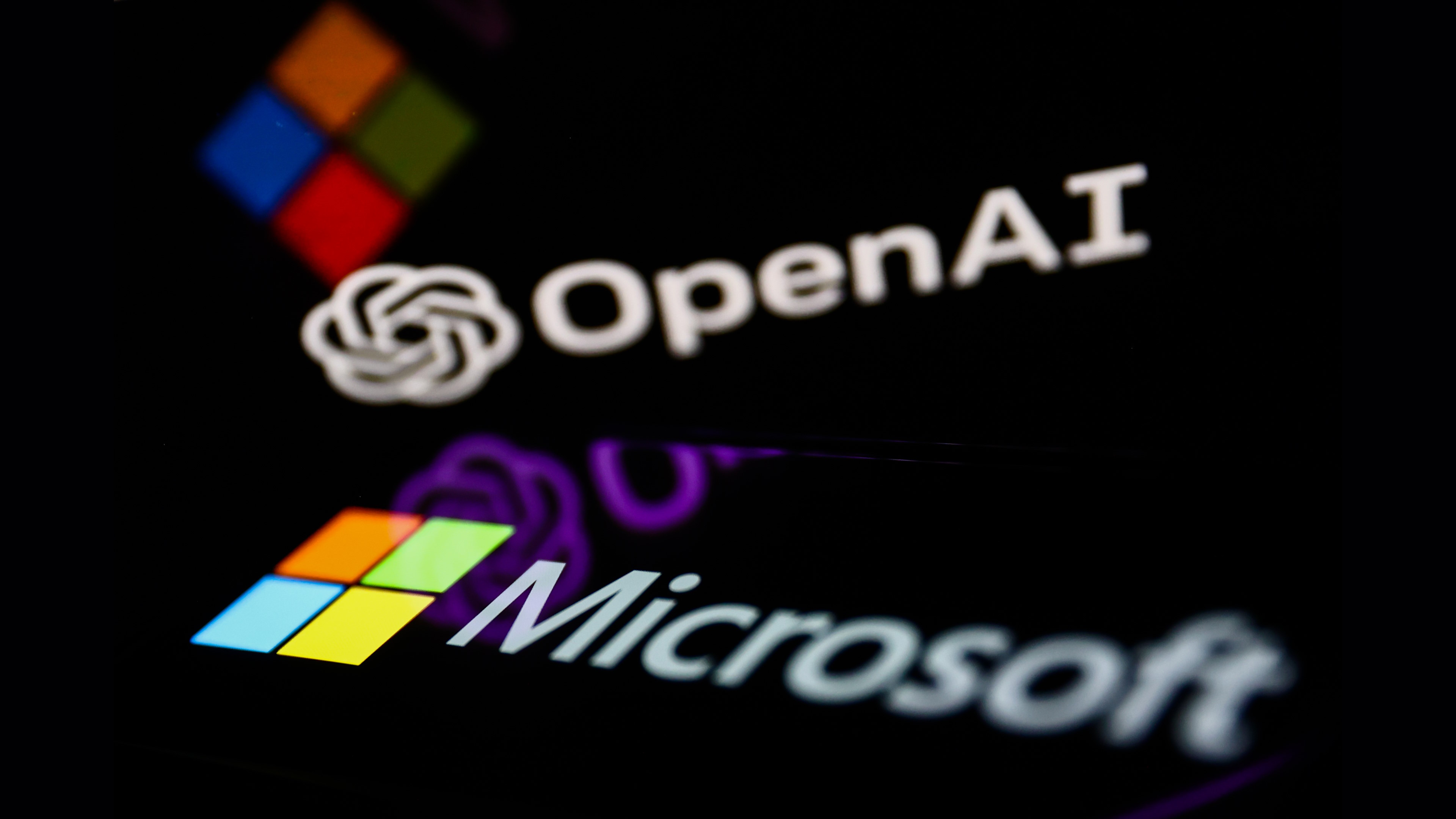
What explains these prices is the unprecedented scale of investment in AI. Over the last few months, we've seen the AI industry receive and shuffle around some seriously mind-boggling amounts of cash and capital.
OpenAI's Stargate project was announced at the start of the year and plans to spend $500 billion on AI infrastructure in the US over four years. That project is now thoroughly underway, and has even spread beyond the borders of the US into the UK. We've seen Nvidia recently invest $100 billion into the Sam Altman-headed company, and OpenAI invest tens of millions into AMD and agree to purchase $300 billion of computing power from Oracle over the next five years. Plus many more deals and investments, such as with Broadcom—and these are just considering OpenAI, the poster child for this AI era alongside Nvidia.
With all this money being flung around and data centers springing up so quickly that they're having to be housed in tents, it's little wonder that the memory and storage industries are experiencing a drain in supply. Which is great for them, of course, as they can rake in the money from raised product prices and booming share prices, as well as sell out their entire HBM supply, but it's not so great for us.
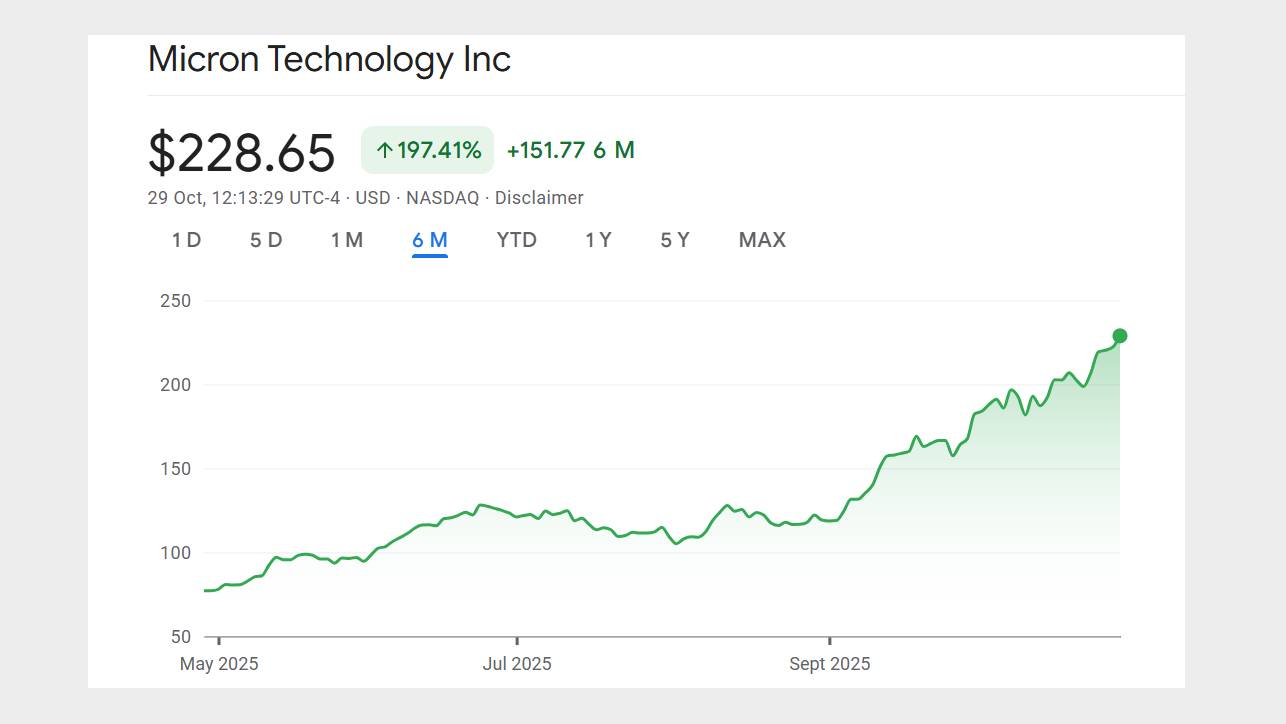
There's little chance that these memory and storage manufacturers will create much more supply than is currently needed, either. For one, this can sting these companies if demand unexpectedly drops, as they discovered in 2023. Second, whirring up new or increased semiconductor production is no simple matter and can take years, and the demand from the AI sector doesn't seem to be slowing down.
There is, of course, the chance that the entire AI industry gives a loud and audible pop as what many are calling the AI bubble bursts. To simplify, the reason some think the AI industry is a bubble is because there's tons more investment than revenue in the industry right now, which arguably means more and more money must be pumped into it to keep it going under the hopes that some day the revenue will appear.
To this end, a lot of the money involved seems to be flowing back and forth between the same companies. For instance, Nvidia invests in OpenAI, and OpenAI buys hardware from Nvidia. This creates what some see as a circular system where money is continually injected with little actual return, inflating the metaphorical bubble until eventually it pops like the housing market did in 2008 and the dot-com market did in 2000.
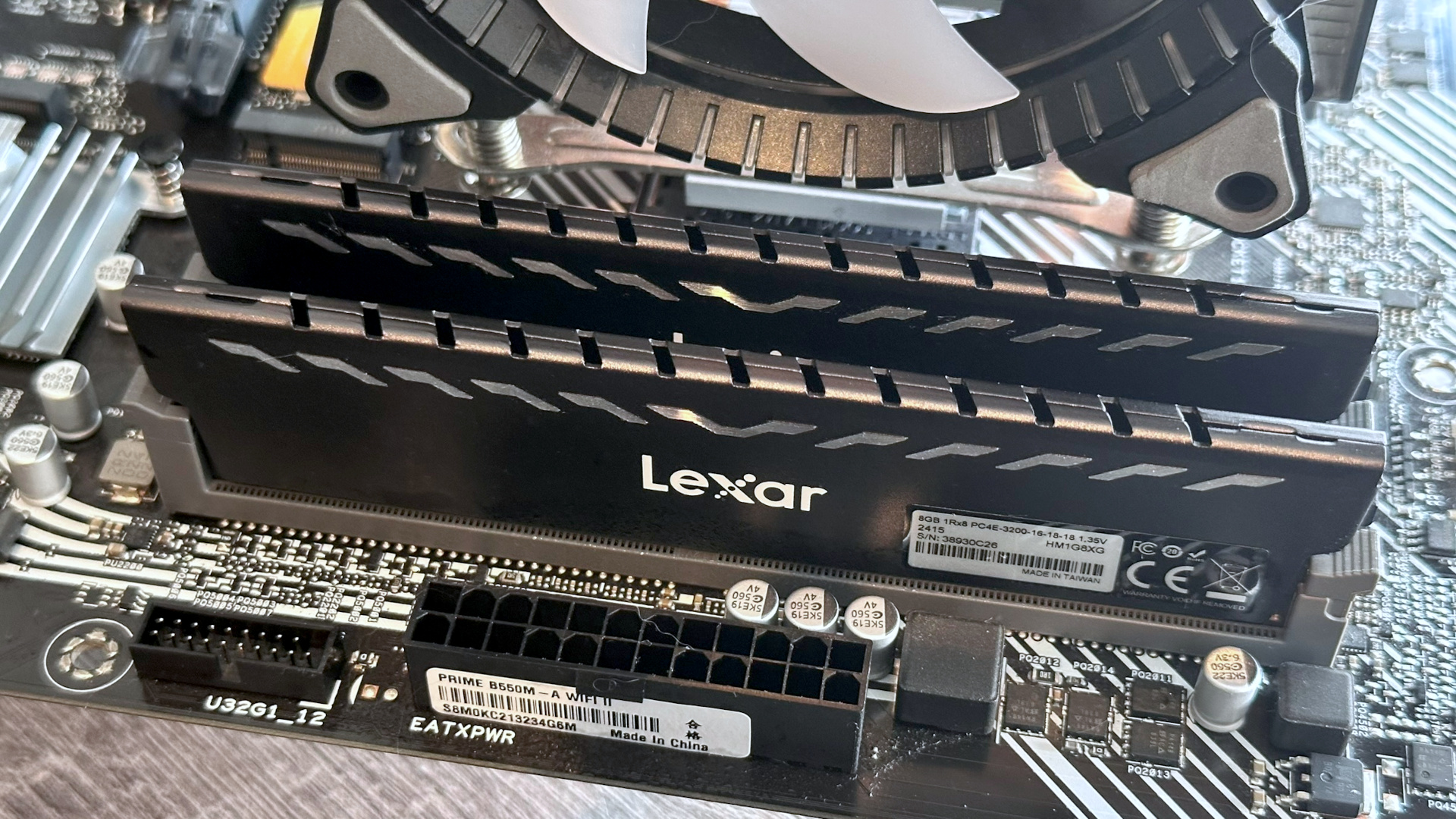
We must remember, however, that although the dot-com bubble burst, it did leave behind the seeds for the internet. In a similar way, the AI bubble bursting could leave behind the seeds for a less inflated world of AI.
That could still sort out the memory and storage market, though. As it stands, vast swathes of memory and storage capacity is spoken for by big AI companies well before it's packaged and ready to be installed into servers, most of it in advance. And these production commitments are based on the current rate of arguably inflated AI market expansion. If that inflation comes to a sudden end and reversal, we might be dealing with oversupply again and lower prices.
However, market analysis sees the current memory shortage lasting for another three or four years. This tracks with at least what some, such as ex-Intel CEO Pat Gelsinger, think about the so-called AI bubble: that sure, it might burst, but that won't be for "several years." In which case, we might have to settle in for a long haul of high memory and storage prices.

1. Best DDR5 overall:
G.Skill Trident Z5 RGB 32 GB DDR5-7200
2. Best budget DDR5:
Teamgroup T-Force Vulcan DDR5-5200
3. Best high-capacity DDR5:
G.Skill Trident Z5 64 GB DDR5-6400 CL32
4. Best DDR4 overall:
TEAM XTREEM 16 GB DDR4-3600
5. Best budget DDR4:
G.Skill Ripjaws V 16 GB DDR4-3600
6. Best high-capacity DDR4:
Corsair Dominator Platinum RGB 32 GB DDR4-3200

Jacob got his hands on a gaming PC for the first time when he was about 12 years old. He swiftly realised the local PC repair store had ripped him off with his build and vowed never to let another soul build his rig again. With this vow, Jacob the hardware junkie was born. Since then, Jacob's led a double-life as part-hardware geek, part-philosophy nerd, first working as a Hardware Writer for PCGamesN in 2020, then working towards a PhD in Philosophy for a few years while freelancing on the side for sites such as TechRadar, Pocket-lint, and yours truly, PC Gamer. Eventually, he gave up the ruthless mercenary life to join the world's #1 PC Gaming site full-time. It's definitely not an ego thing, he assures us.
You must confirm your public display name before commenting
Please logout and then login again, you will then be prompted to enter your display name.
